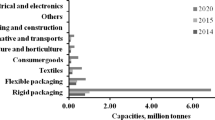Abstract
Processed pork products are highly perishable and they need to be stored under refrigeration temperature throughout storage, distribution, and marketing to maintain quality. Retort processing technology helps obviate the requirement of refrigeration during storage of food products and thereby enables production of food products which can be stored at ambient temperature. Keeping this advantage in mind, experiments were undertaken to develop formulation and process schedule for production of thermally processed shelf stable ‘pork curry’. Curry products are spicy Indian traditional food products prepared with meat, vegetables, spices, condiments etc. In this experiment, pork chunks were shallow fried in a pan until the core temperature reaches about 50 °C. Gravy ingredients were prepared separately and semi cooked until temperature reaches about 90 °C. About 75 g of the fried meat and 125 g of the vegetable curry was put in retort pouches. Filled-in retort pouches were sealed with impulse sealing machine. For thermal processing, the retort temperature was maintained at 121 °C. Pressure of the retort was maintained at 20 ± 1 psi throughout the process. Core temperature of the product was measured using copper thermocouples. F0 of 11.81 was found to be adequate for pork curry. Total process time was 48 min. Retort pouched products were analyzed for storage stability. Product was found to be of good quality up to 6 months of storage at ambient temperature.

Similar content being viewed by others
References
AOAC (1995) Official methods of analysis, 16th edn. Association of Official Analytical Chemist, Washington, D.C.
APHA (1984) Compendium of methods for the microbiological examination of foods. American Public Health Association, Washington. D.C.
Bachhil VN (1982) Observations on seasonal variations in microbial load. Symposia on fermented foods, food contaminants biofertilizers and bio energy. FC10: 23rd Annual Conference, Association Microbiologists of India, Mysore, November 22–24
Bindu J, Gopal TKS, Nair TSU (2004) Ready-to-eat mussel meat processed in retort pouches for the retail and export market. Package Tech Sci 17:113–117
Bourne MC (1978) Texture profile analysis. Food Technol 32:62–72
Chia SS, Baker RC, Hatchkiss JH (1983) Quality comparison of thermo processed fishery products in cans and retortable pouches. J Food Sci 48:1521–1524
Cremer ML, Pizzimonti KV (1992) Effects of packaging equipment and storage time on energy used for reheating beef stew. J Am Diet Assoc 92:954–958
FAO (2014) Food and Agriculture Organization. Statistical database. www.fao.org. Accessed 1 Nov 2017.
Gopal TKS, Vijayan PK, Balachandran KK, Madhavan P, Iyer TSG (2001) Traditional Kerala style fish curry in indigenous retort pouch. Food Control 12:523–527
Hiroyuki O, Yaichiro K, Mikio Y (2002) Sliced meat for retort pouched food. Japanese Patent JP2002306133
ISI (1971) IS: 2168. Specification for pomfret canned in oil. Indian Standards Institution, New Delhi
Keeton JT, Foegeding EA, Patana AC (1983) A comparison of non-meat products, sodium triphosphate on several quality attributes of unfrozen and frozen cooked dark turkey muscle. Poult Sci 65:1103–1111
Keller JE, Skelley GC, Acton JC (1974) Effect of meat particle size and casing diameter on summer sausage properties during. J Milk Food Technol 37:297–300
Kondaih N, Anjaneyulu ASR, Pragati H (2006) Meat terminology—A to Z vocabulary. Indian Veterinary Research Institute, Izatnagar, p 54
Koo YB, Park SJ, Byeon YR, Son SH (1993) Heat penetration characteristics and keeping quality of retort pouched curry. Korean J Food Sci Technol 25:61–68
Leander RC, Hedrick HB, Brown MF, White JA (1980) Comparison of structural changes in bovine longissimus and semitendinosus muscles during cooking. J Food Sci 45(1):1–6
Lyon PH, Klose AA (1981) Effects of heat processing on sensory properties of fowl meat. J Food Sci 46:227–230
Mahadeviah M, Gowramma RV (1995) Packaging of processed fruits and vegetable products: meat and marine products. In: Profile on food packaging. CFTRI, Mysore and IIP, Bombay, pp 40–46
Manju S, Sonaji ER, Leema J, Gopal TKS, Ravisankar CN, Vijayan PK (2004) Heat penetration characteristics and shelf life studies of seer fish moilee packed in retort pouch. Fishery Technol 41:37–44
Prince Devadason I, Anjaneyulu ASR, Babji Y (2010) Effect of different binders on the physico-chemical, textural, histological, and sensory qualities of retort pouched buffalo meat nuggets. J Food Sci 75(1):S31–S35
Prince Devadason I, Anjaneyulu ASR, Mendirtta SK, Murthy TRK (2014) Quality and shelf life of buffalo meat blocks processed in retort pouches. J Food Sci Technol 51:3991–3997
Rajan S, Kulkarni VV, Chandirasekaran V (2014) Preparation and storage stability of retort processed Chettinad chicken. J Food Sci Technol 51:173–177
Rajkumar V, Dushyanthan K, Das AK (2010) Retort pouch processing of Chettinad style goat meat curry—a heritage meat product. J Food Sci Tech 47:372–379
Ranganna S (2000) Handbook of canning and aseptic packaging. Tata McGraw-Hill Publ Co Ltd., New Delhi
Rhee KS, Anderson LM, Sams AR (1996) Lipid oxidation potential of beef, chicken and pork. J Food Sci 61:8–12
Snedecor GW, Cochran WG (1989) Statistical methods of analysis. Oxford and IBH publishing Co, Kolkata Speck. Am. Pub. Hlth. Assoc., Washington, D.C
Stumbo CR (1973) Thermo bacteriology in food processing. Academic press, New York, pp 93–120
Tarladgis BG, Watts BM, Younathan MT, Dugan LR (1960) A distillation method for the quantitative determination of malonaldehyde in rancid foods. J Am Oil Chem Soc 37:403–406
Terajima Y, Nonaka Y (1996) Retort temperature profile for optimum quality during conduction heating of foods in retortable pouches. J Food Sci 61:673–678
Thankamma R, Gopal TKS, Iyer TSG (1998) Storage of fish paste heat-processed in retort pouch. Central Institute of Fisheries Technology, Cochin, pp 246–250
Acknowledgements
Authors thank Ministry of Food Processing Industries, New Delhi and Science & Engineering Research Board, New Delhi for funding the studies. Authors also thank Director, ICAR-National Research Centre on Pig, Guwahati for providing laboratory facilities for undertaking the work.
Author information
Authors and Affiliations
Corresponding author
Rights and permissions
About this article
Cite this article
Girish, P.S., Nath, L., Thomas, R. et al. Development of Shelf Stable Ready-to-Eat Pork Curry Using Retort Processing Technology. J Package Technol Res 2, 61–66 (2018). https://doi.org/10.1007/s41783-018-0026-5
Received:
Accepted:
Published:
Issue Date:
DOI: https://doi.org/10.1007/s41783-018-0026-5




